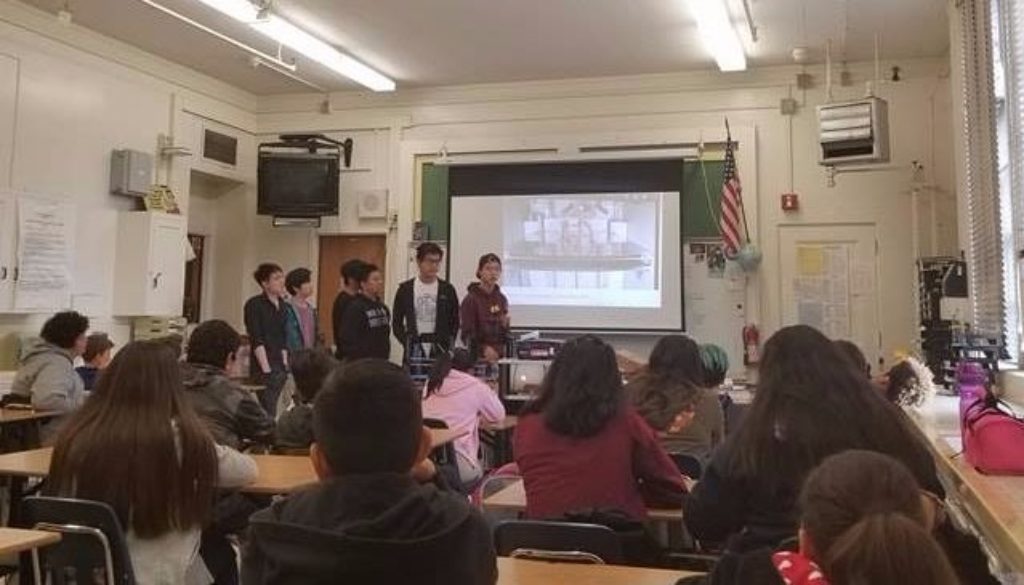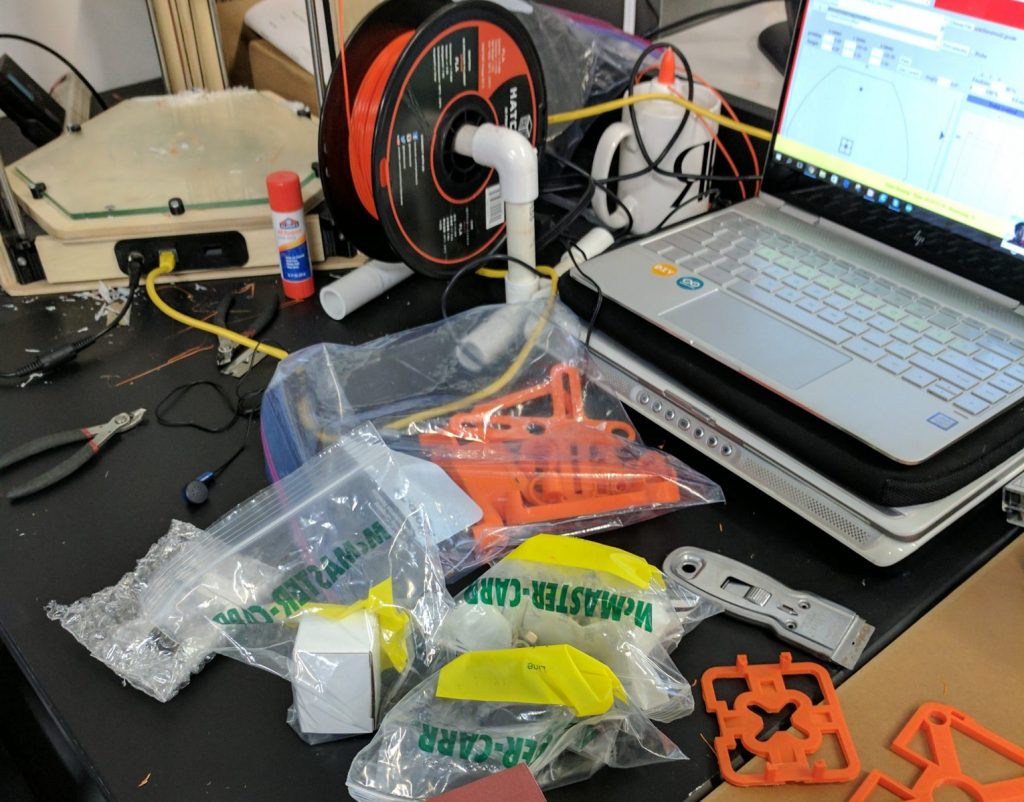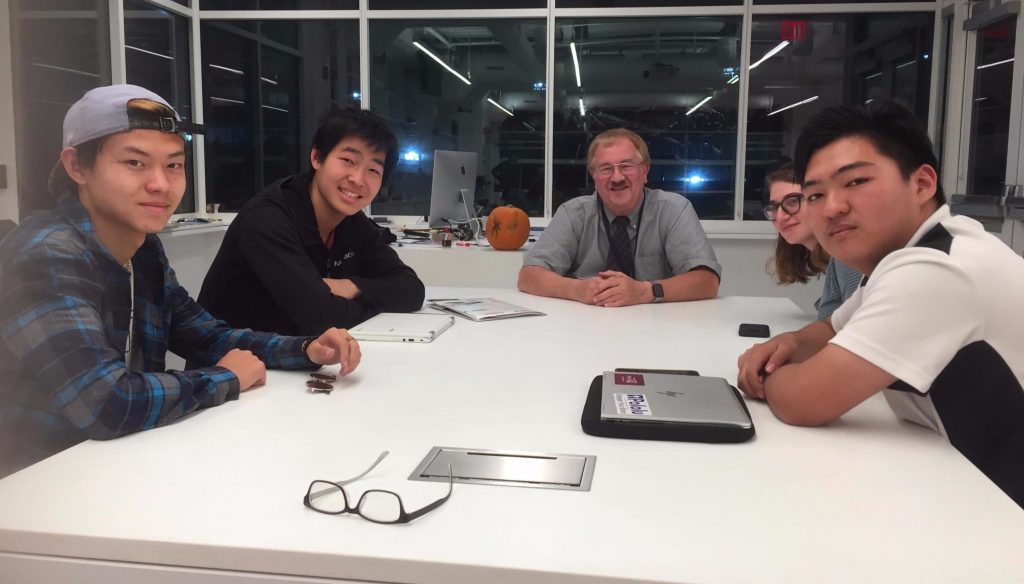A group of high school students in Los Angeles have launched a project to engage pupils in STEAM/STEM (Science, Technology, Engineering, Arts and Mathematics) subjects. using a combination of 3D printing, open-source robotics and programming.
The non-profit initiative, called Project Magnify, is run by eight core members and a team of volunteers. They hold classes and workshops in schools throughout South Central Los Angeles involving the 3D printing as a means of STEAM education.
3D Printing Industry spoke to Project Magnify’s co-founder and CEO, Hansub Kim, to find out more about the project and its objectives.

3D printing and access to STEAM
According to the project’s proposal document STEAM programs, especially in high schools, are often unaffordable to underprivileged students. Well off universities (with a few notable exceptions) typically don’t lend a hand either, a reality with which Hansub Kim identifies.
“Usually, when a high school student does get a position at a lab or a professional scientific facility,” he explains, “it is through parents or other non-professional connections. I have personally experienced this myself.”
As a creator of the AthenaBot Delta and Tevo Tarantula 3D printers, Kim is confident that 3D printing can help solve the problem. “It doesn’t matter who you are. Ideas are currency, and 3D printing is the ideal democracy, where the high school student and the mechanical engineer can work on a level playing field,” he says.
“It takes the socio-economic variable straight out of the equation. With 3D printing, soon you won’t need money or connections for success in STEM.”
Inspired by bio DIY
For Kim, the solution began with biohacking, a low cost open source trend focused on community biological research. “I couldn’t get a position at a professional research lab,” he explains, “so I turned to TheLab, a DIY Biohacking community biology lab in Downtown LA.” This led Kim to set up a science research club at his high school which helped students conduct research at TheLab and enter local competitions.
Inspired by the interest in biohacking, Kim and fellow attendees decided to set up Project Magnify, to “close the disparity in STEM education, and to take socioeconomic status out of a quality education in science and engineering.”
Printing bridges and forging links
Project Magnify’s activities consist of short-term commitments, including STEM Fairs and Maker Fairs, and long-term commitments, such as year-long or semester-long time slots with specific schools.
While short term commitments involve giving a comprehensive interactive presentation of 3D printing, longer term projects may involve building a Cartesian/Delta 3D printer from scratch, or learning to program robots using Arduino and Raspberry Pi.
According to Project Magnify’s director of outreach, Eugene Woo, “It is also Project Magnify’s responsibility to share our vision with other high schools and like-minded peers to create a bigger base for outreach.” In line with this ambition, Project Magnify branched out from North Hollywood High School to Loyola High School in June of 2017.

3D printing in outreach
Project Magnify’s first workshop revolves around the use of the OpenFlexure Microscope, an open-source, 3D printed microscope developed by the Synthetic Biology Lab at The University of Cambridge. Together with a modifiable camera apparatus and LED-controlling joystick (developed by Stanford University), students mentored by Project Magnify learn about phototaxic amoeba on slides.
Kim states that the Cambridge’s OpenFlexure Microscope was “a lucky find on the internet.” The project had previously used Stanford’s LudusScope, and “wanted to downsize to something with fewer pieces to print…with the same qualities (a real-time camera module and Raspberry Pi connection).”
Project Magnify also uses two 3D printed machines to teach pupils about the functions and applications such technology. The Scru-Fe 3D printed robot uses distance sensors and servos with 9 degrees of freedom to move around avoiding obstacles. The 3D printed Micro-105 Quadcopter demonstrates the workings of Arduino code and hardware (including stepper motors).
Finally, Project Magnify brings its own Cartesian Printer and two Delta Printers to both produce the apparatus for other workshops and demonstrations. “Rather than leaving the printers/microscopes after we’re done building with the students,” Kim explains, “we hope to establish a permanent relationship with the school.”

A space to make, create and educate
The project’s members meet with students after school on a weekly or biweekly basis to collaboratively finish a project, and donate the finished machines and gadgets to the school for future use.
With the project’s long-long term curriculum aligned with one whole US school year (August to June), different students will be in different classes once the year is finished. However, troubleshooting firmware and mechanical printer errors will be in the hands of pupils taught by Project Magnify.
Thus far, the team has already held a number of events, including outreach visits to schools across Greater Los Angeles and presentations at academic fairs. It has also held development meetings with local educational authorities, which helps spread the word about Project Magnify to the LA Chamber of Commerce, and members of the city council.
After initially preparing most 3D printed objects and apparatus in the HexLab 3D printing makerspace in Chatsworth, until the membership cost became too much. “Project Magnify now works at the Fab Lab at Milken Community Schools” Kim explains, “It is headed by Mr. Roger Kassebaum, a physics teacher there who is dedicated to furthering the open-source movement through STEM-inclined youth, and allowed us to use the facility anytime at no cost.”
According to Ronen Lee, Project Magnify’s Chief of Staff, early and frequent exposure to 3D printing to pupils is best, not just for themselves, but the community as a whole. “The earlier students pick up on it, the better,” he explains. “Our main hope as an organization is that the 3D printing exposure we give students and the community will be a gateway into advanced fields of STEM and beyond.”
For more stories on 3D printing in education and outreach, subscribe to our free 3D Printing Industry newsletter, follow us on Twitter, and like us on Facebook.
Featured image shows Project Magnify staff teaching school kids about 3D printing. Photo via Project Magnify.


